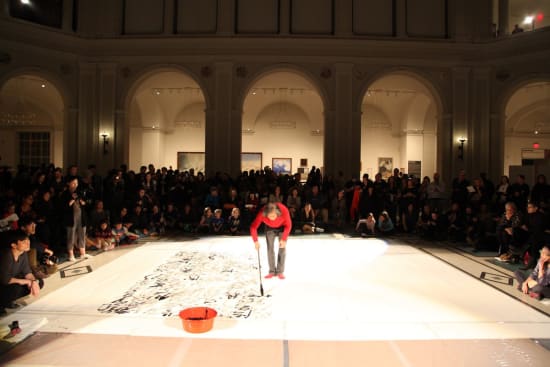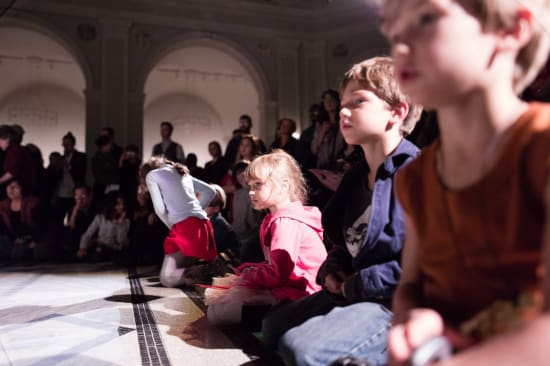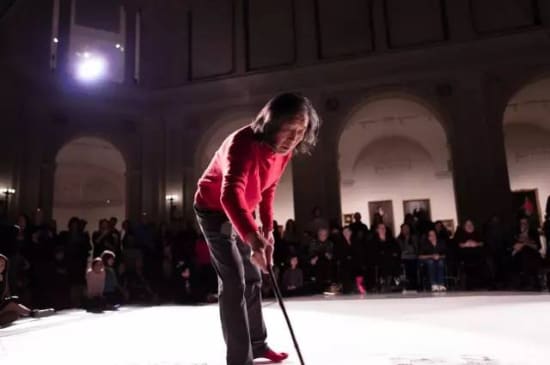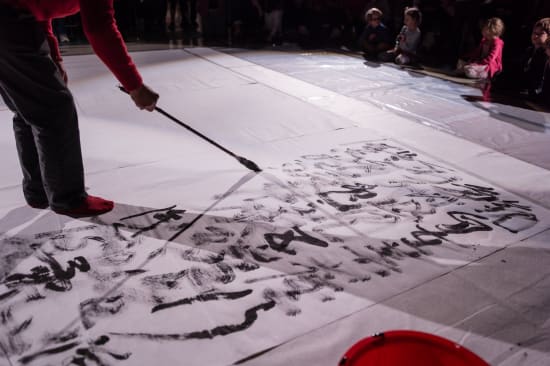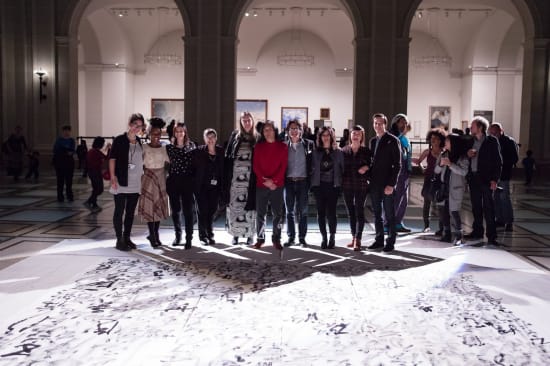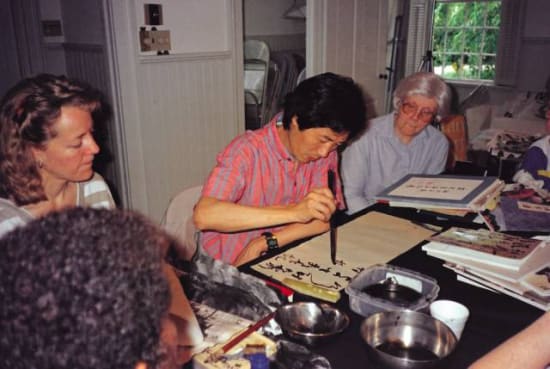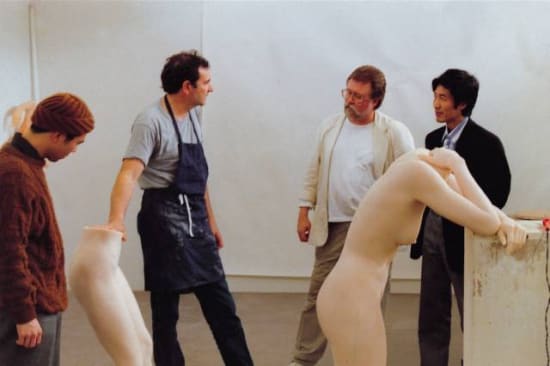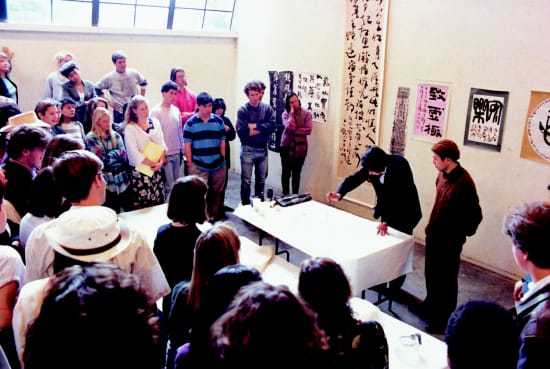In the evening of November 7, 2015, Wang Dongling gave a public calligraphy performance in his signature “chaos script” at the Brooklyn Museum. This event was part of “Target First Saturdays—Connecting Cultures: A World in Brooklyn. The Brooklyn Museum is celebrated for its experimental contemporary art programming and for attracting audiences from various cultural backgrounds. In its mission to bring art to the general public and commitment to progressiveness, it has much in common with Wang Dongling.
Spotlit at the center of the museum's Beaux-Arts Court, Wang Dongling worked directly on xuan paper on the floor totaling 5 by 4 meters. He chose a brush with a long and narrow bamboo stem, which he repeatedly ran dry, causing its hair to split and rub against the paper surface to create faint, almost ethereal traces. “Chaos script” breaks millennia-old calligraphy conventions by interweaving individual characters and even entire columns of text. The resulting amorphous and energetic chaos fully express the gestural and expressionistic qualities of calligraphy. Wang Dongling chose to write the Heart Sutra, a concise articulation of the core tenet of Mahayana Buddhism: that all mental and physical phenomena are empty. There are intriguing resonances between the sutra’s notion of the nonduality of “form” and “emptiness” and chaos script, in which written language hovers on the brink of legibility without becoming abstract images.
After the work was cordoned off, a group activity combining dance, percussive music, and yoga called Afro Flow Yoga took place around it.
This reminds us that Wang Dongling’s chaos script performance was itself a product of multiple cultures. The Heart Sutra is an example of the influence of Buddhism on China. Teaching foreign students in China in the 1980’s, Wang Dongling already began to examine the Chinese calligraphic tradition from an outsider’s perspective and to realize its universal significance. For example, he has observed the zhou 州 character as written by Yan Zhenqing in Robert Motherwell’s Elegy to the Spanish Republic series.
In the mid-1980's, there was a sudden influx of Western philosophy and avant-garde art into China, leading young Chinese artists and intellectuals to reflect on individual existence and China's cultural traditions. This is known as the '85 New Wave. It was against this backdrop that Wang Dongling accepted an invitation by the University of Minnesota to teach Chinese calligraphy in 1989. In the United States, he was energized by the confrontation with an alien cultural environment—one of hamburgers, cars, jazz music, and abstract painting—and eagerly sought to express himself in new ways.
At Minnesota, Wang Dongling taught students of oil painting, sculpture, and printmaking. Most of them did not know Chinese, but were able to enrich their practices through their exposure to it. Wang gradually realized that the nuances of rhythm, composition, and spatial transformation in Chinese calligraphy transcend linguistic barriers and are universally moving.
Remaining convinced of Chinese calligraphy's cultural value and self-expressive capacity, Wang Dongling saw it as a unique contribution to world art. Through its trans-linguistic formal qualities, he could create a dialogue between Chinese traditions and the world. Between 1989 and 2015, he organized 15 solo exhibitions in the United States to introduce the fruits of his tireless artistic experimentations. He believes that "form and content are intimately connected. New content inheres in every new form."
Wang Dongling's monumental works of mad cursive calligraphy respond sensitively to particularities of mood, atmosphere, time, and space. He describes his state of being when executing them as a "solitary communion with the spirit of heaven and earth." Breaking free from rules and conventions, chaos script achieves a perfect balance of self-expression and the embodiment of the mad cursive tradition. It also incorporates the artist’s experience of the United States, particularly his appreciation of the Abstract Expressionist painting.
